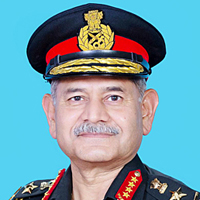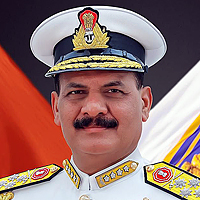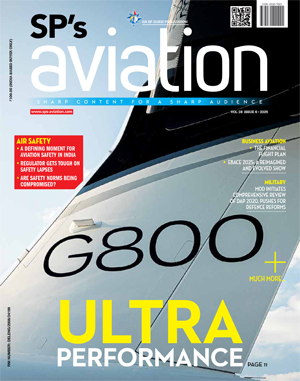INDIAN ARMED FORCES CHIEFS ON OUR RELENTLESS AND FOCUSED PUBLISHING EFFORTS

The insightful articles, inspiring narrations and analytical perspectives presented by the Editorial Team, establish an alluring connect with the reader. My compliments and best wishes to SP Guide Publications.

"Over the past 60 years, the growth of SP Guide Publications has mirrored the rising stature of Indian Navy. Its well-researched and informative magazines on Defence and Aerospace sector have served to shape an educated opinion of our military personnel, policy makers and the public alike. I wish SP's Publication team continued success, fair winds and following seas in all future endeavour!"

Since, its inception in 1964, SP Guide Publications has consistently demonstrated commitment to high-quality journalism in the aerospace and defence sectors, earning a well-deserved reputation as Asia's largest media house in this domain. I wish SP Guide Publications continued success in its pursuit of excellence.
- Prime Minister Modi Visits Punjab’s Adampur Air Base, Interacts with Airmen after Successful ‘Operation Sindoor’; Stern Message to Pakistan
- The layered Air Defence systems that worked superbly, the key element of Operation Sindoor
- Operation Sindoor | Day 2 DGMOs Briefing
- Operation Sindoor: Resolute yet Restrained
- India's Operation Sindoor Sends a Clear Message to Terror and the World – ‘ZERO TOLERANCE’
- Japan and India set forth a defence cooperation consultancy framework, talks on tank and jet engines
IAF modernization to bring down obsolescence
By R.ChandrakanthAddressing a press conference here today, the Air Chief said all procurements will be based on the nation’s aspirations and capabilities. The obsolescence rate was “most critical” in the area of Air defence and the IAF was ensuring to plug this through the many programmes - AWACS; AFNET; missile systems etc.
On the status of the zeroing in on the OEM (Original Equipment Manufacturer) for the Medium Multi-Role Combat Aircraft (MMRCA), Naik said the flight evaluation reports had been submitted to the Ministry of Defence on July 30 and the matter was being discussed. Asked whether the deal would go in favour of the Americans and it would be signed during the US President Barack Obama’s visit to India in November, he shot back that he was unaware of any such programme.
However, he remarked that the IAF was keen on “not putting all the eggs in one basket” and went on to explain how India now had the financial power to choose the aircraft it wanted. “In the last 10 years our financial power has increased”, unlike in the past wherein the IAF had to make do within the budgetary constraints. “We have lived with and continue to manage with the multiplicity of equipment. It is indeed a complex inventory management and the technical manpower has to be commended for their efforts in keeping the Air Force in readiness always.”
In the next 15-20 years, the IAF will have SU30, MMRCA, LCA and the FGFA (fifth generation fighter aircraft), empowering the IAF further. The IAF required about 200-250 FGFA and the joint Indo-Russian project was “progressing” and induction of the aircraft was due in 2017. The features of the aircraft would be advanced avionics, 360 degrees of situational awareness, swing-role, stealth etc.
Border build-up: With regard to the build-up of forces on the Chinese border, the Air Chief stated that both the eastern as well as the western borders have been secured and reiterated that the IAF was constantly watching the movements of the neighbours. IAF’s capabilities were based on four pillars - seeing (radars, satellites etc); reach (long-range missiles); strike (weapons) and peacetime (protect assets through air defence). Along the borders, the airfields were difficult to expand due to availability of land, but wherever possible helipads had been authorized.
On aircraft accidents, the Air Chief said “it is a matter of grave concern to us. When an aircraft takes off, it is fully serviceable as we hold lives very sacrosanct.” The reasons for accidents are several, including older aircraft, human error etc.
IAF in civil defence: “The use of Air Force in civilian activities - counter-insurgency, disaster management etc - the possibilities are endless, but it is totally a government decision. As for preparedness of the IAF, there are no two ways about it.”
On the controversial Armed Forces (Special Powers) Act , the Air Chief refused to be drawn into it, nevertheless said that “if the Armed Forces are deployed then there has to be legal protection to them”.
Commonwealth Games: The IAF had been mandated to help out in the success of the Common Wealth Games and the spectacular show on October 3 was part of that overall response. “We stay on alert, for the opening as well as the closing ceremonies”. The airspace in Delhi was closed for about 12 hours for the opening of the Games ceremony and so would it be for the closing ceremony.





